Military Knowledge: Karrar Drone

Karrar is an Iranian multirole drone with a turbojet engine, which is in service of different military units of Iranian Army and the IRGC, including the Air Force, Navy, Air Defense Force and IRGC Aerospace Force. Karrar is Iran’s first experience in building a jet-powered drone, as well as Iran’s first combat UAV capable of carrying a wide range of weapons.
Karrar multirole drone is the first Iranian drone that can carry and use a wide range of weapons, including air-to-air and air-to-surface missiles, using a single platform. This UAV is produced by the Iran Aircraft Manufacturing Industrial Company (HESA), which is under the Ministry of Defense, and has been used by various departments of the Iranian Armed Forces.
History:
A maquette of Karrar UAV was first seen in 2004 at a military equipment exhibition, and later in 2010, it was unveiled under the name “Karrar Bomber Drone” during a ceremony attended by the then president of Iran. The exact date of the start of the production and use of the Karrar is not known and has not been officially announced, but the year 2010 can be considered as the year of its entry into service.
From the very beginning of its unveiling, the Karrar UAV carried a Mark 82 unguided bomb weighing 500 pounds (226.79 kg), and it was said that this UAV could also carry a cruise missile. In 2013, the news of using the Kosar cruise missile on the Karrar UAV was published, which increased the capabilities of the Karrar due to Kosar’s 100 kg weight and 25 km range.
In 2014, Mersad air defense system was tested using Karrar UAV. In this test, Karrar was used as a target drone for testing the air defense system and train the air-defense crews.
The different introduction of the Karrar UAV in 2018 with the name “Karrar-4 Interceptor” which carried the Shahab Thaqeb missile showed that this drone has generations and each of these generations is defined based on the type of mission; But this generation was never stated clearly.
At the unveiling ceremony of Yasin, Balaban and Qaem 1, 5 and 9 bombs in 2019, Amir Hatami, the then Minister of Defense, announced that the Yasin glide bomb can be released from the Karrar drone. Yasin glide bomb is the result of adding a wing and guidance kit to the Mark 82 bomb, which was previously used by the Karrar drone.

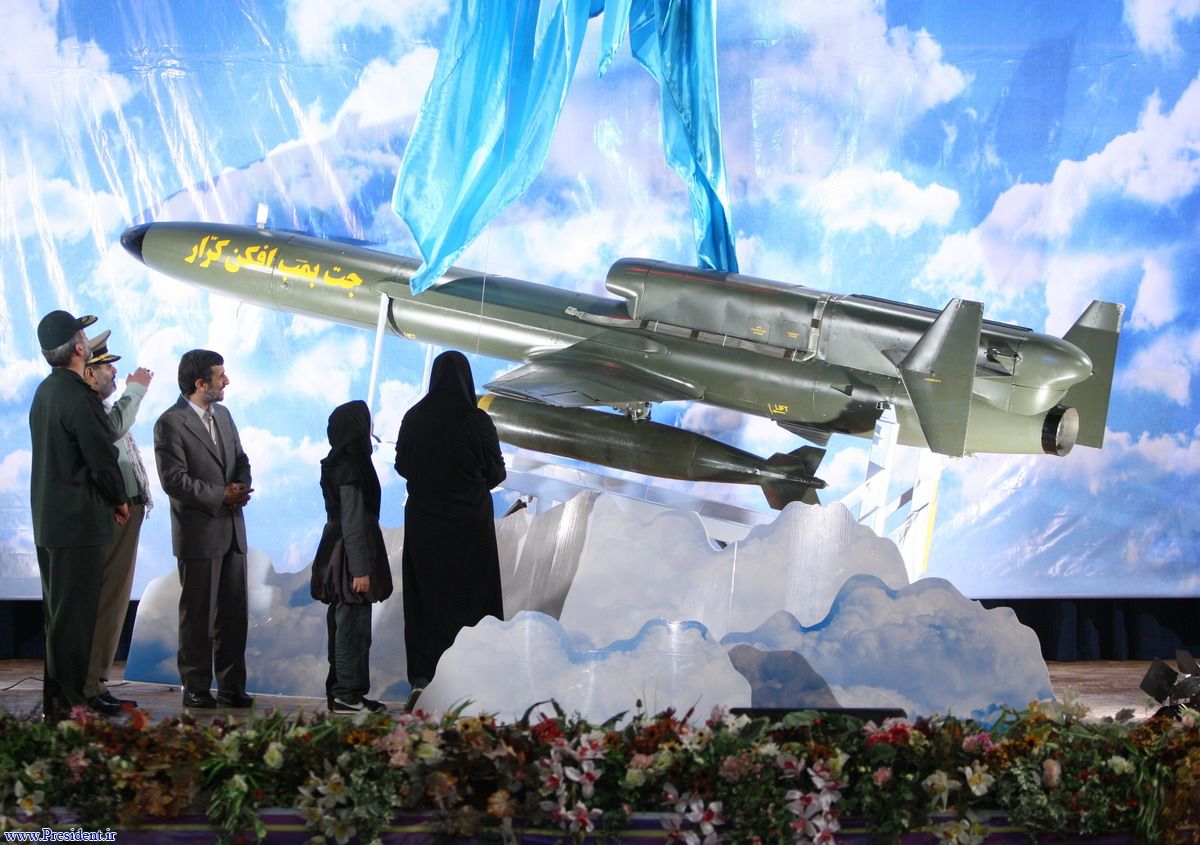
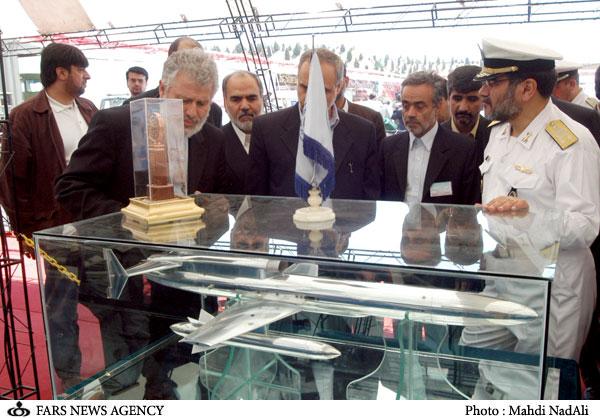
Design:
The Karrar multirole drone is a derivative of the American 1970s-era Beechcraft MQM-107 Streaker target drone. The MQM-107A drone was purchased before the Iranian Islamic Revolution to be used as a target drone in defense exercises. In fact, in terms of appearance, the Karrar UAV is more similar to the Skua UAV made in South Africa. Nevertheless, in general, Karrar drone is very different from Skua and MQM-107 drones.
To produce Karrar drone, it was first necessary to redesign the engine used in the American version. The MQM-107A drone delivered to Iran used the Teledyne CAE J402 engine, which was considered an old engine and was no longer used in America. In another model of this UAV, which is known by the suffix B, that is, the MQM-107B model, the French microturbo TRI 60-2 074 turbojet engine is used. So, Iran designed and produced the Toloue-4 jet engine based on the same French TRI 60 engine that was used on MQM-107B model. The French TRI 60 engine has many variants, but the TRI 60-2 074 engine is most similar to the Toloue-4 turbojet engine.
The TRI 60-2 074 engine is a triaxial microjet with three axial compressors, a combustion chamber and a turbine stage, which has a diameter of 33 cm, a length of 124 cm, and a weight of 61 kg, and produces a maximum force of 3.4 kilonewtons (KN). The Toloue-4 jet engine, which is the Iranian indigenously produced variant of this engine, is also a triaxial turbojet engine with three axial compressors, a combustion chamber and a turbine stage, and has a diameter of 33 cm, length of 130 cm, weight of 55 kg, and a maximum power of 3450 newtons (N). The Toloue-4 engine is slightly longer and weighs less than its French counterpart.
The Toloue-4 turbojet engine is also used in the Noor cruise missile and the Ya-Ali cruise missile.

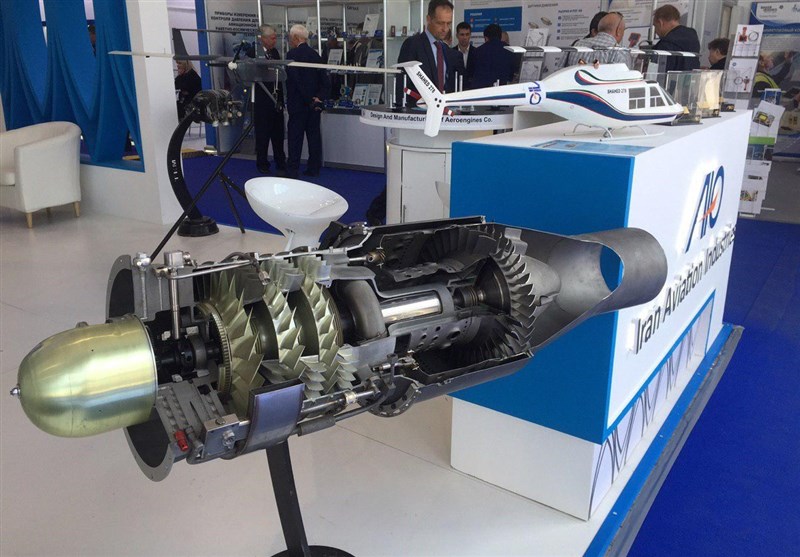
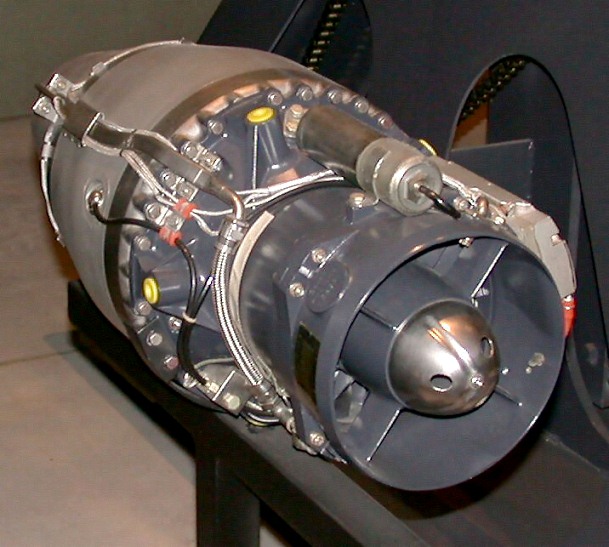
Considering the repeated comparison of the Karrar drone with the American MQM-107 drone, we will discuss the differences in appearance between this design and its American model.
The first difference is in the tail fins, which are similar to the design of Skua drone made in South Africa and not similar to the American model. The BQM-126A UAV is another UAV that is similar to the Karrar in terms of its tail fins, but the wings and the tips of the tail fins in the BQM-126A and the Karrar are completely different, and in this sense, it is more similar to the South African model.
The second difference is the location of the drone engine, which is not similar to any of the mentioned drones. In the American and African variant, the engine is placed under its body, but in the Iranian variant, this engine is placed along the body and at its end. The reason for this special design is the use of a hardpoint under the belly to carry 250 kg of weapons.
The third difference and also a similarity is the location of the main wing. In the Iranian variant, the main wing is attached under the body. In the African variant, the wings are located on the body, and in the American variant also the wings are located under the body.
It cannot be denied that the Karrar is modeled after another drone, but the design of the American target drone and the Iranian Karrar drone are both derived from the idea of simplifying the manufacture of weapons and making them less expensive, which allows for mass and cheap production.
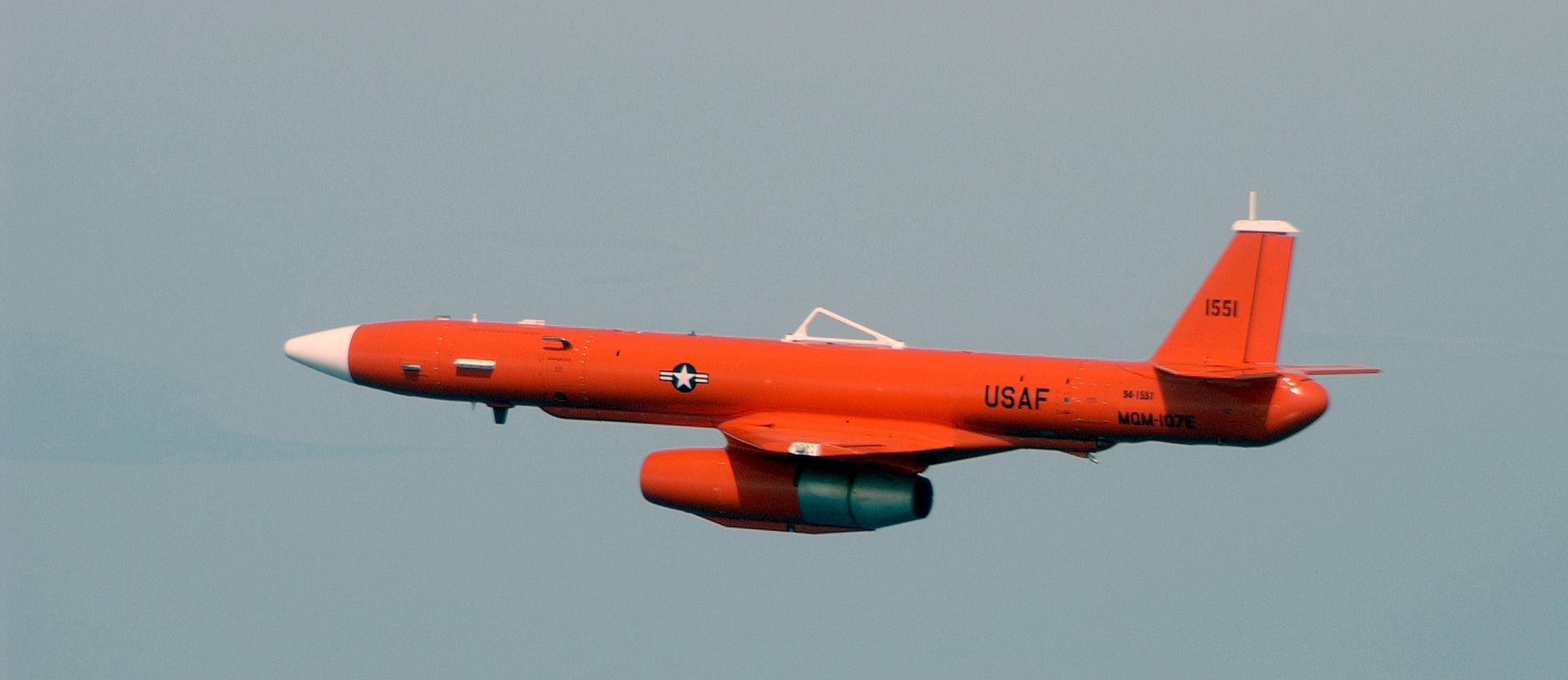
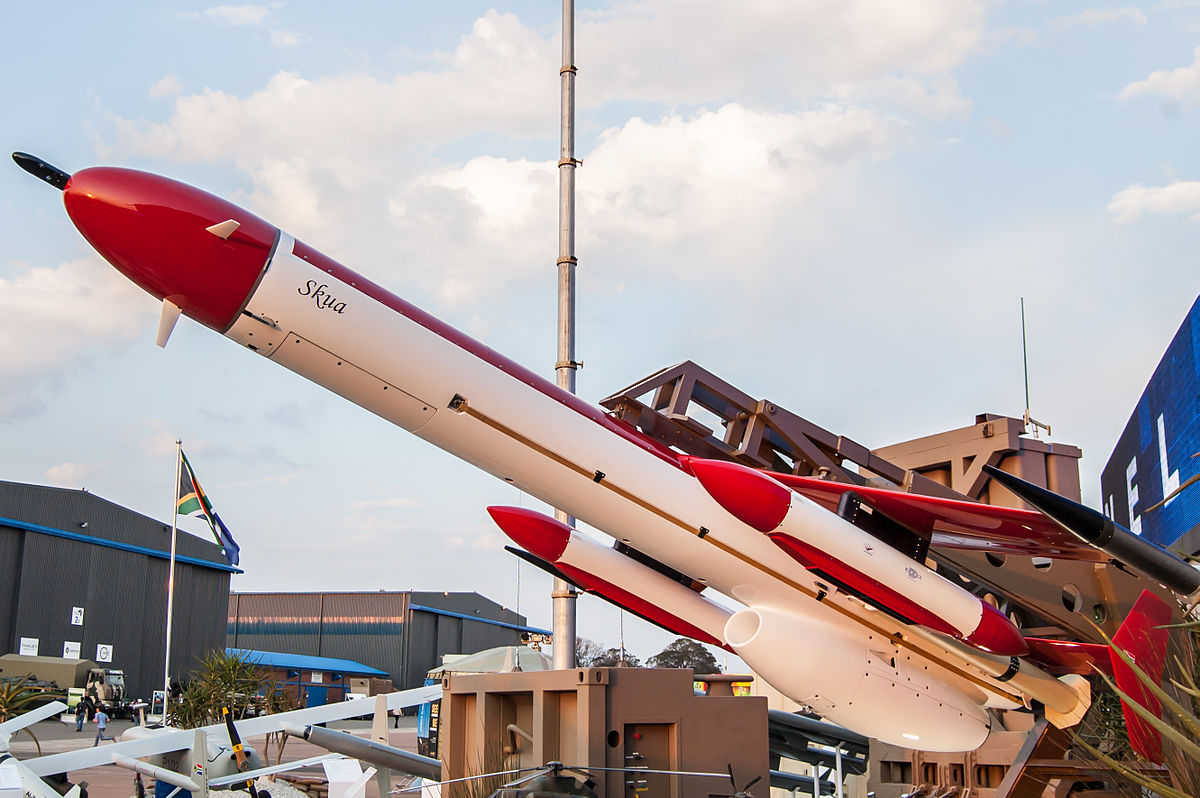
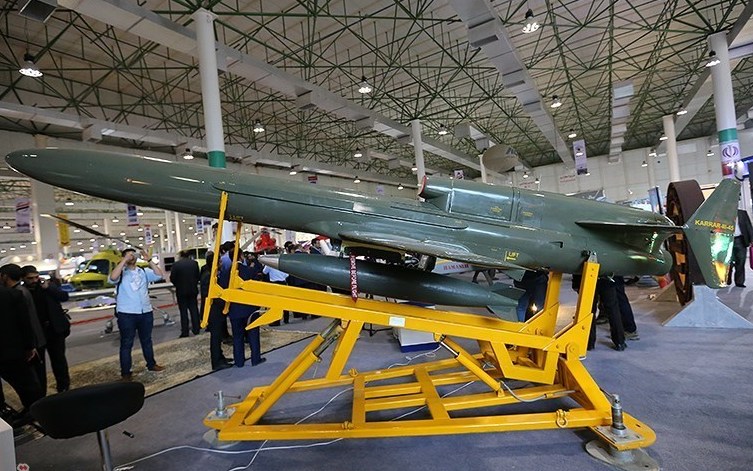

Variants:
According to the way of introducing the Karrar multipurpose drone, it seems that this drone has four generations. Many sources stated that there have been changes in the dimensions, but due to the fact that not all the characteristics have been announced in each generation and the lack of sufficient documents, this issue cannot be denied or confirmed.
First generation: Karrar bomber drone
At the time of its unveiling in 2010, the Karrar drone carried the title of bomber. The reason for this name was the use of Karrar as a drone that carried and used unguided air-to-ground bombs such as Mark-82 bomb. The published test video of Karar drone show the high accuracy of this UAV when using a free fall bomb.
Second generation:
No reliable information has been published about the second generation of the Karrar UAV, but it seems that this variant was launched for a completely different mission, which pushed the generation to the sidelines at the time of unveiling. For this variant, it has a range of 1000 km and a maximum speed of 900 km/h with the possibility of carrying 226 kg of explosives.
Third generation:
This variant has a length of 3.75, a wingspan of 3.1 and a height of 1.5 meters, and a maximum take-off weight of 750 kg with the ability to carry a cargo of 250 kg. Other features of Karrar-3 UAV include a flight ceiling of 35,000 feet equivalent to 10,670 meters, max speed of 700 km/h, a cruising speed of 650 km/h, and a flight duration of 1 hour and 15 minutes. In this variant, Toloue 4 jet engine with JP-4 fuel is used and the body is mainly made of aluminum.
Fourth generation: Karar interceptor drone
This variant of drone was first seen carrying a Shahab Thaqeb missile in 2018, which was later named Karrar 4 Interceptor. This UAV is used as one of the complementary components in offensive and defensive systems, and due to the possibility of firing it from the back of the trailer, it can be launched from near the borders towards the hostile aircraft to engage with it.
The interceptor variant has been a regular part of many Iranian military exercises. This drone was able to intercept a P-8 reconnaissance aircraft that was trying to collect information from a military exercise in 2022. The P-8 forced to retreat from the training area.
It should be noted that for all Karrar models, the ability to fly up to a height of 40,000 feet, equivalent to 12.2 km, and a final speed of 900 km/h have been stated. Karrar UAVs have a range of up to 200 km (Karar-3) when flying with direct communication with the ground station, and between 800 and 1000 km when flying automatically without the need for constant communication with the station.
Engine:
As we said earlier, the Karrar drone uses Toloue 4 turbojet engine in most of the variants. However, in 2022, a variant of Karrar equipped with Toloue-5 turbojet engine was used to test Sayyad 4B missile for the Bavar 373 air defense system. Karrar drone with Toloue 5 turbojet engine was able to reach a height of 43000 feet equivalent to 13.1 km and a speed of 733 km/h at that height.
Launching method:
The Karrar UAV is launched with the Rocket Assist Take-Off (RATO) mechanism and takes help from the booster to get the initial acceleration. With this booster and its engine, Karrar can fly with a maximum weight of 750 kg, of which 250 kg is weapons. In order to make it possible to use this drone tactically and more widely, a carrier vehicle was designed that carries three drones in ready-to-launch state. The carrier vehicle tent also folds up easily so that it is possible to quickly carry out the operation and then move away from the operation area. This combination greatly increases the survivability on the battlefield for Karrar and its carrier vehicle.
It should be noted that the Karrar does not need a runway for landing, and a parachute is used to recover it.
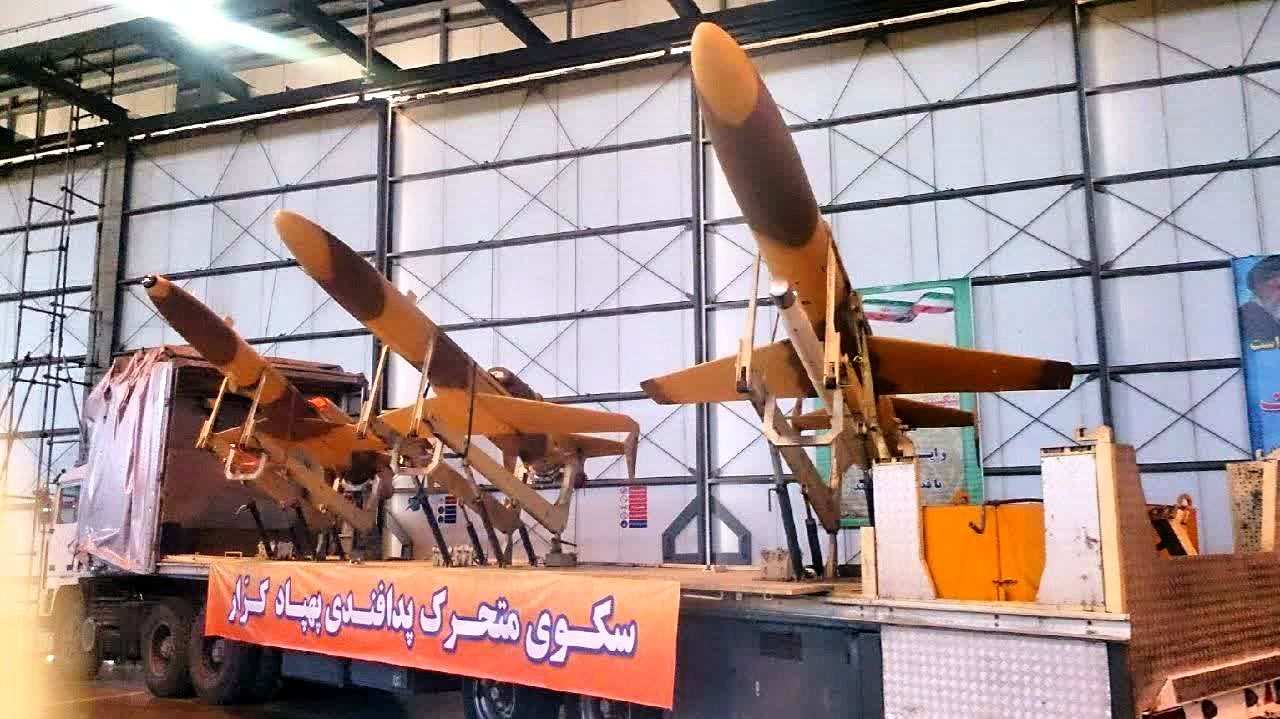
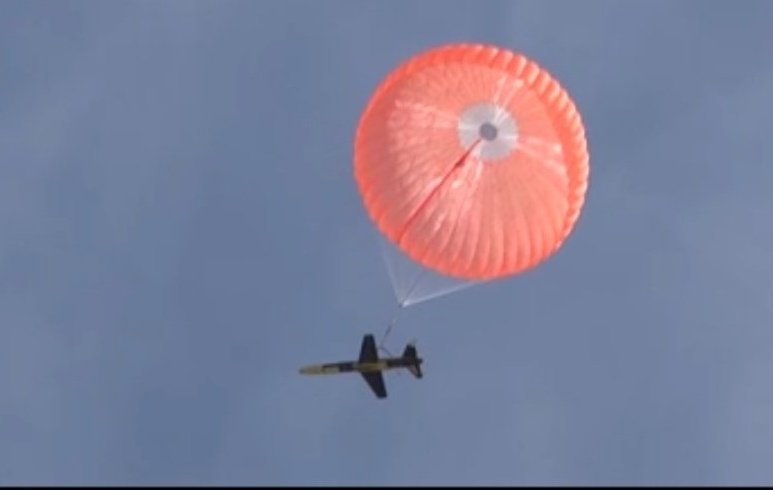
Sensors:
It seems that Karrar did not have a front camera in its prototypes and used only one camera under the body that is fixed to see the ground and targets. Later, with the introduction of the “Karrar Interceptor”, it was revealed that this drone has a camera in its nose that can detect the target at a distance of 30 km and lock onto the target at a distance of 3 km. The Karrar Interceptor was actually an aid to the country’s air defense system to fill the void of an interceptor fighter jet and also to increase the response time by being constantly present at the border areas.
The front camera of this UAV has 360-degree surveillance capabilities and increases the ability to detect both aerial and ground targets.
A new version of the Karrar was seen at the unveiling ceremony of the Army’s Eagle 44 underground base, which is equipped with a front camera and gives the UAV a wider field of vision.
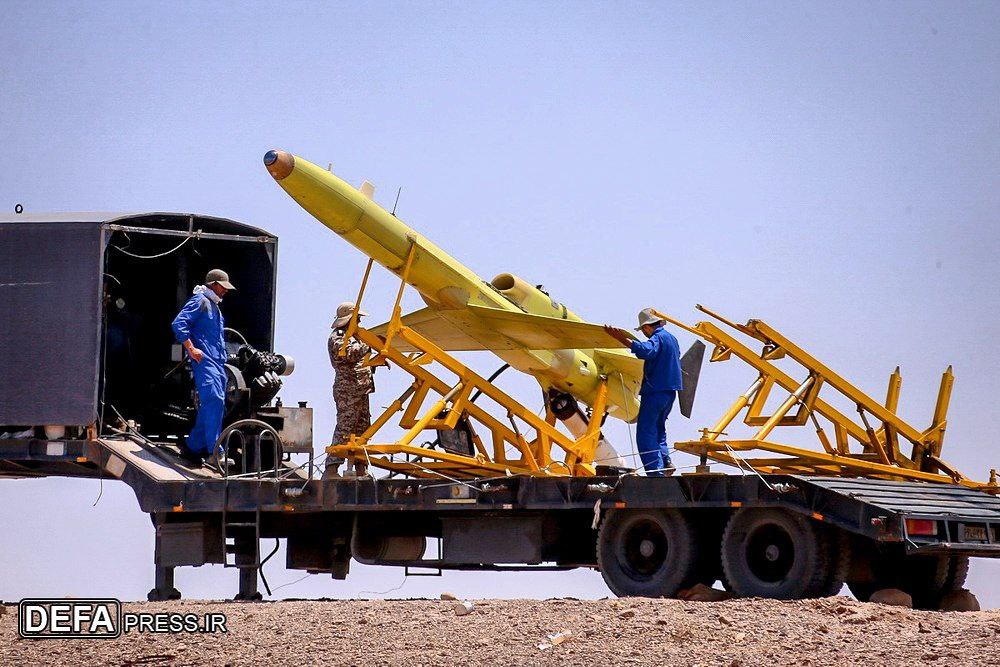
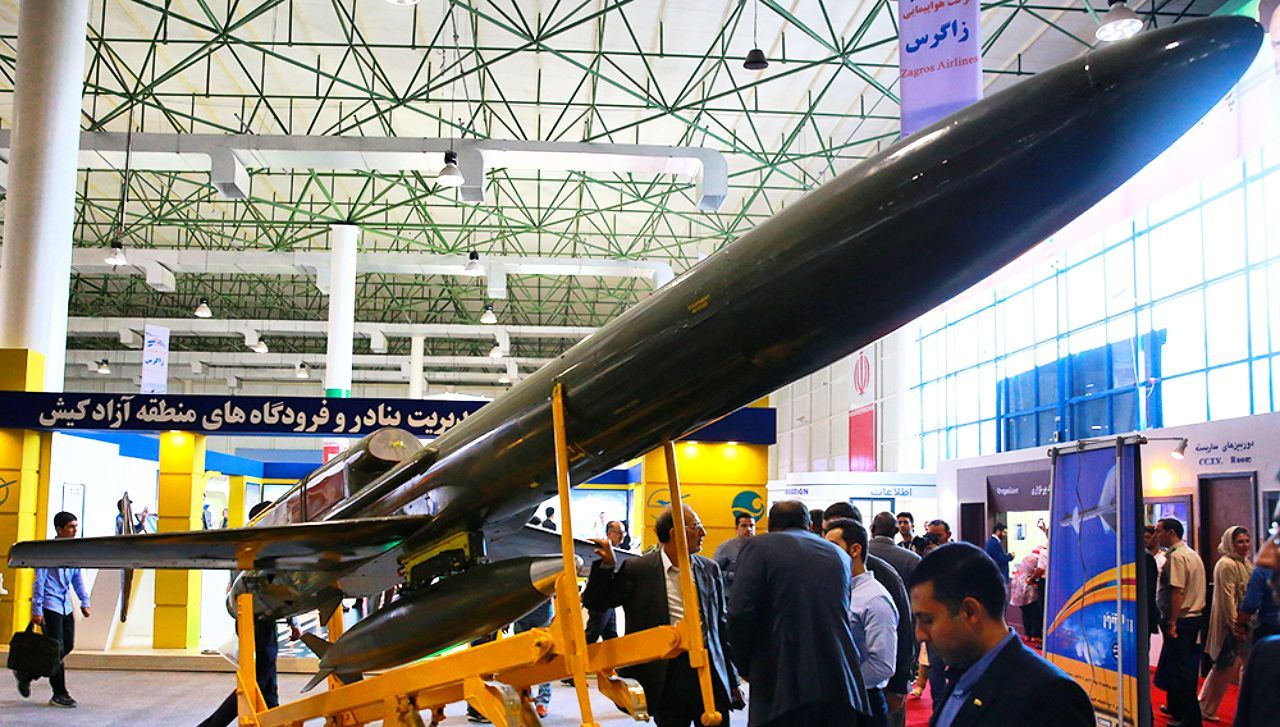
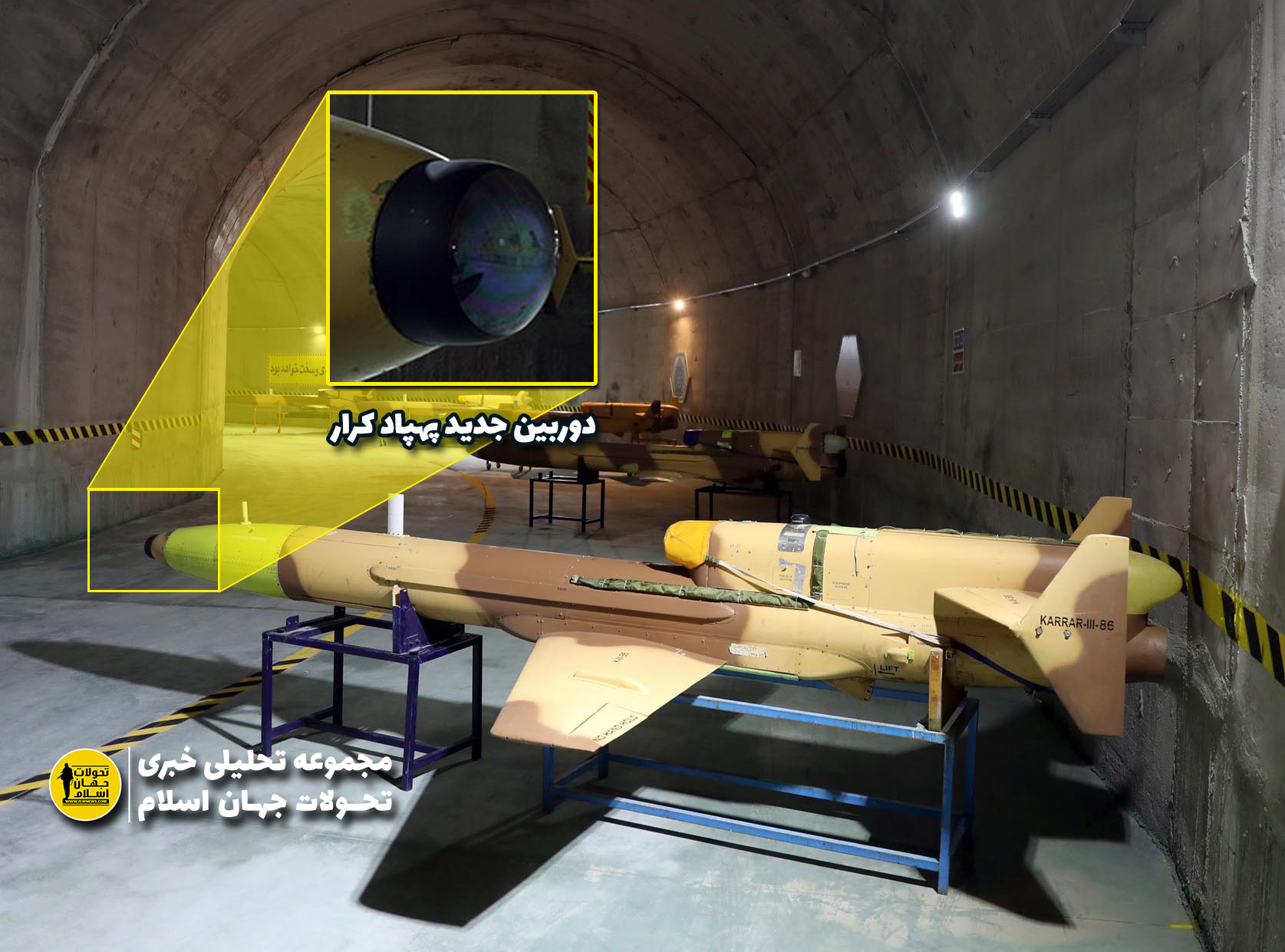
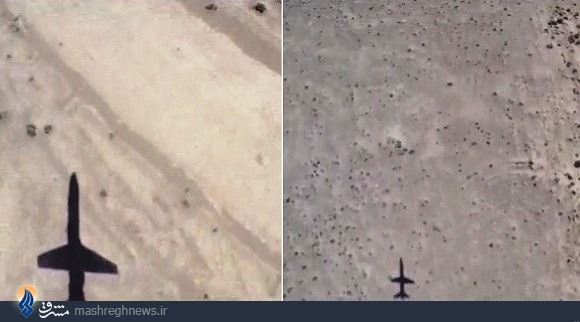
Guidance system:
Karrar’s guidance for accurate hitting of Mark 82 unguided free-fall bombs can be related to the existence of a type of guidance such as Constantly Computed Impact Point (CCIP). In this method, all factors such as wind, speed, target’s movement, gravity, projectile launch velocity, projectile drag and other factors that can affect targeting are calculated and provided to the main computer. The set of information and calculations is finally provided to the operator, which allows the drone to release the bomb accurately. So, the set of these factors, which is actually an inertial guidance, along with the presence of the underbelly camera and GPS, allows this drone to accurately hit the free fall bomb.
Radar equipment:
In the first prototypes of Karrar and in its production workshop, a variant of the Karrar UAV was seen, which seemed to contain some kind of radar. Also, a type of Karrar carrying two Kosar bombs, each mounted on one wing, can be seen, but such a combat combination has never been seen after that.
Another variant of Karrar has also been seen in the exercises, which seems to carry a special type of radar. It is not clear if this radar is for observing the environment or if it is a electronic warfare system to disrupt the enemy’s air defense systems.

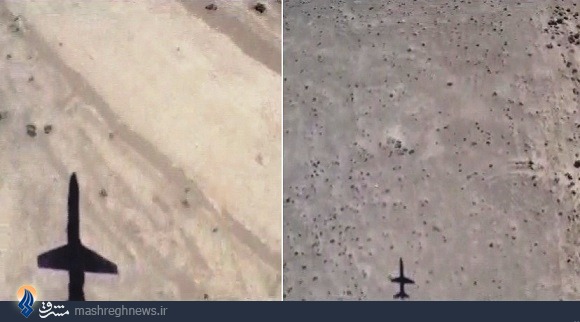
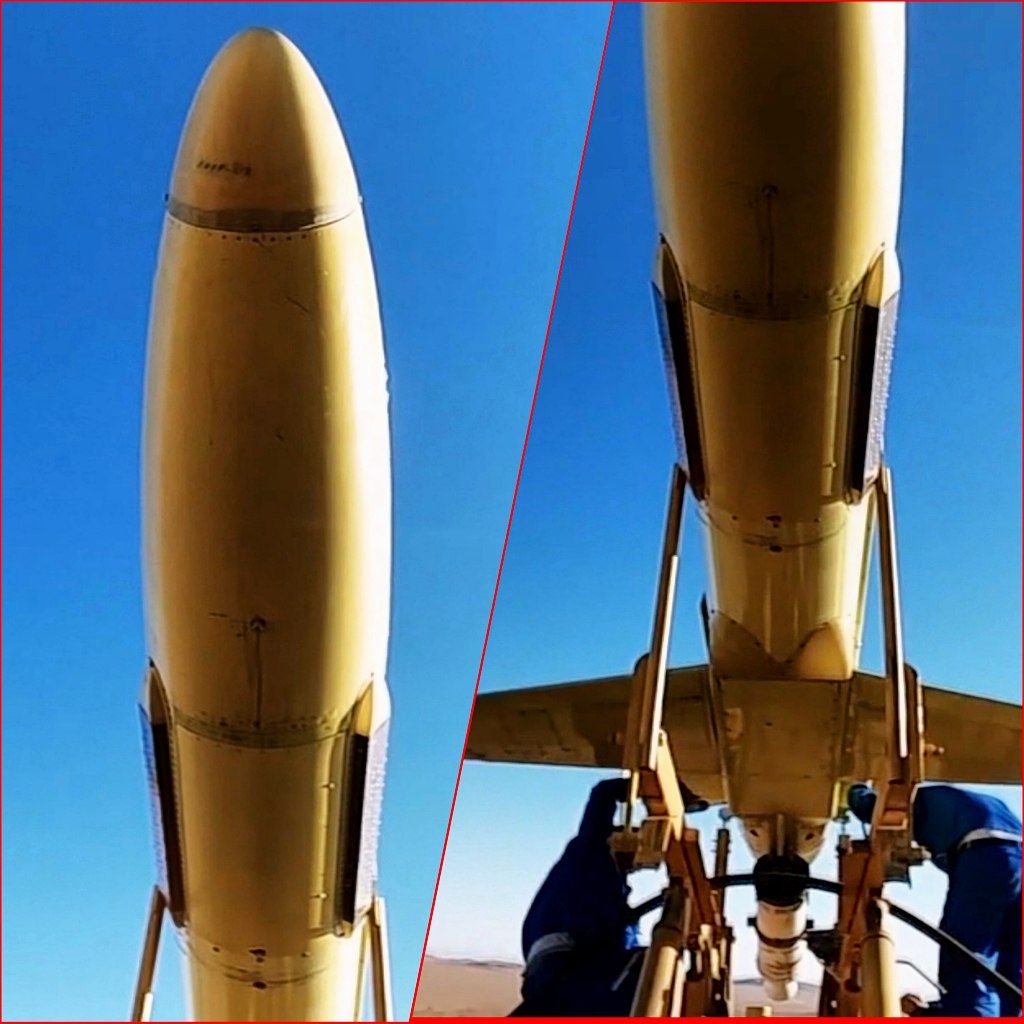
The third-generation Karrar drone can be guided by the ground station up to 200 km. Probably, this number has increased to 300 km in the next generations. However, it is still not possible to guide the Karrar “suicide version”, at it’s maximum range which is 1000 km.
But what is the solution for guiding the Karrar in a range of 1000 km? The only way to guide Karrar drone in a range of 1000 km is to guide it like a cruise missile. This variant most likely has some kind of terrain radar and TERCOM (terrain contour matching) system, which provides the possibility of automatic guidance similar to a cruise missile. It is also stated that there is a possibility of changing the target for the Karrar suicide drone, which seems logical considering the presence of GPS and the possibility of receiving GPS coordinates.
Karrar armament:
From the first day of its introduction, the Karrar drone was seen with Mark 82 unguided bomb. In subsequent variants, this drone has been able to carry the Kosar anti-ship missile weighing 100 kg. In a video at an unveiling ceremony, it was revealed that this drone can carry weapons such as Simorgh cluster bomb, Yasin glide bomb (the same Mark 82 bomb with guidance kit), Balaban glide bomb, 500 pound laser guided bomb (similar to GBU-12B), Azarakhsh air-to-air and anti-tank missile and Shafagh (enhanced) missile. Of course, the Karrar drone has the capability of carrying bombs and other missiles weighing up to 250 kg, which may not be installed on it or may be installed on Karrar in the future.


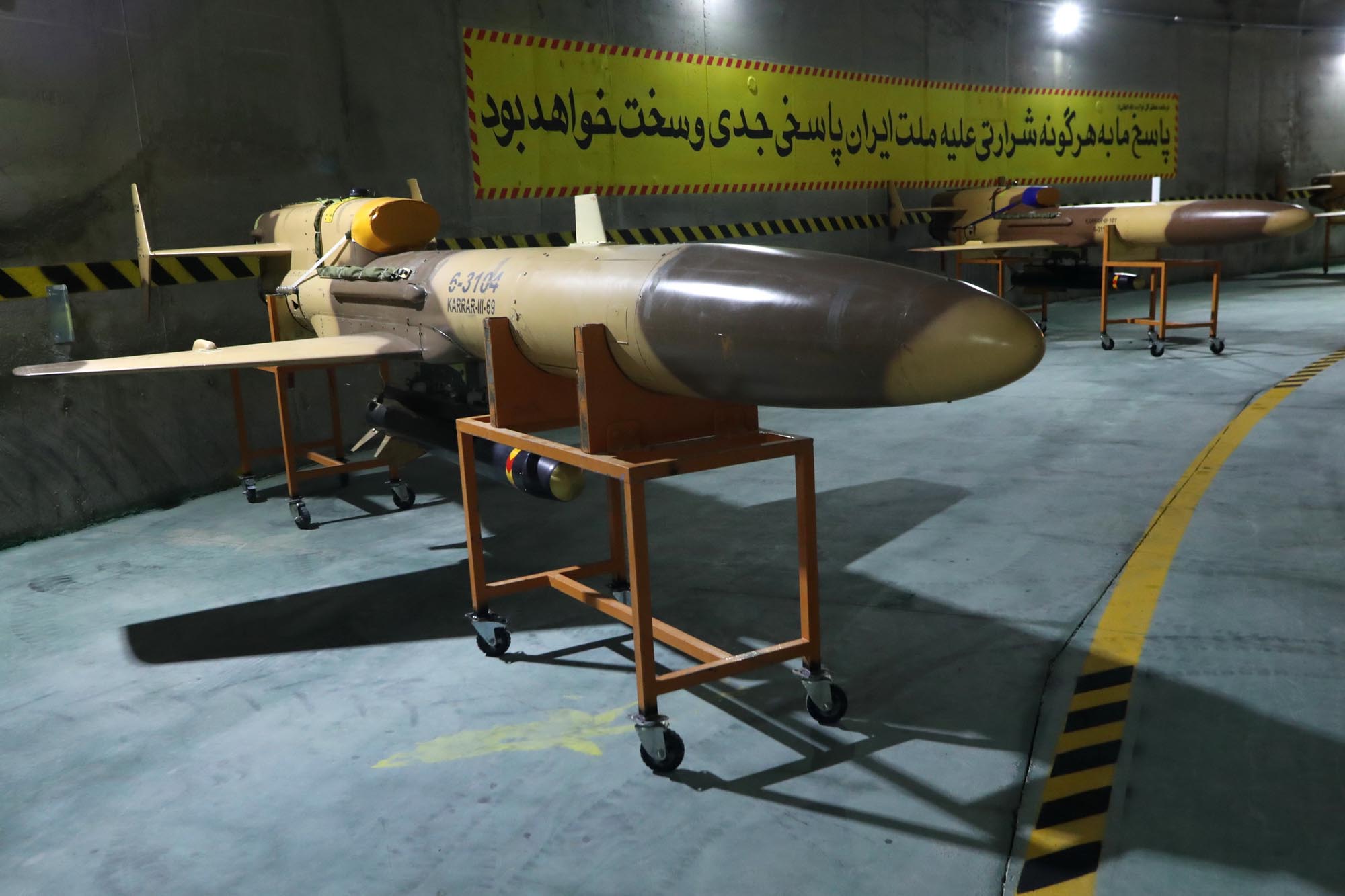
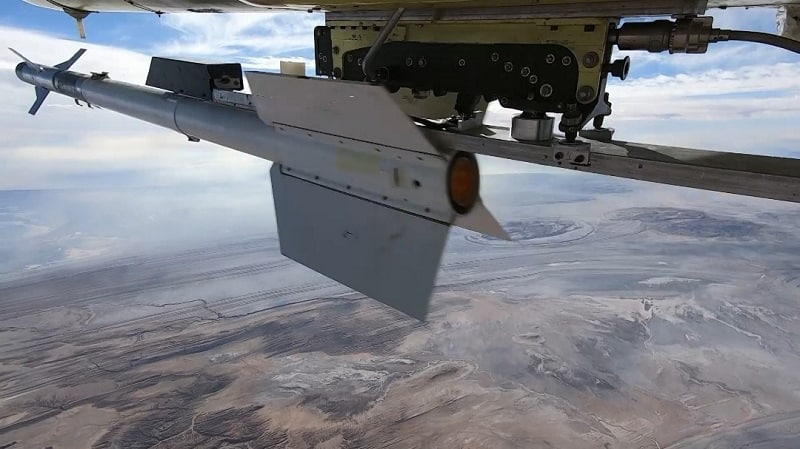
In addition to carrying all kinds of bombs and missiles, the Karrar drone can also carry rapid-firing guns, which have been offered in two types until now. The first gun is Akhgar; Akhgar gatling is a six-barreled gatling with 7.62 mm caliber and 45 kg weight, which was originally developed for helicopters. The second is the installation of three 7.62 mm light guns in one package and in the nose of Karrar drone. The operational level of these versions is not known, but it is possible to hunt drones or low-speed air targets with these guns.
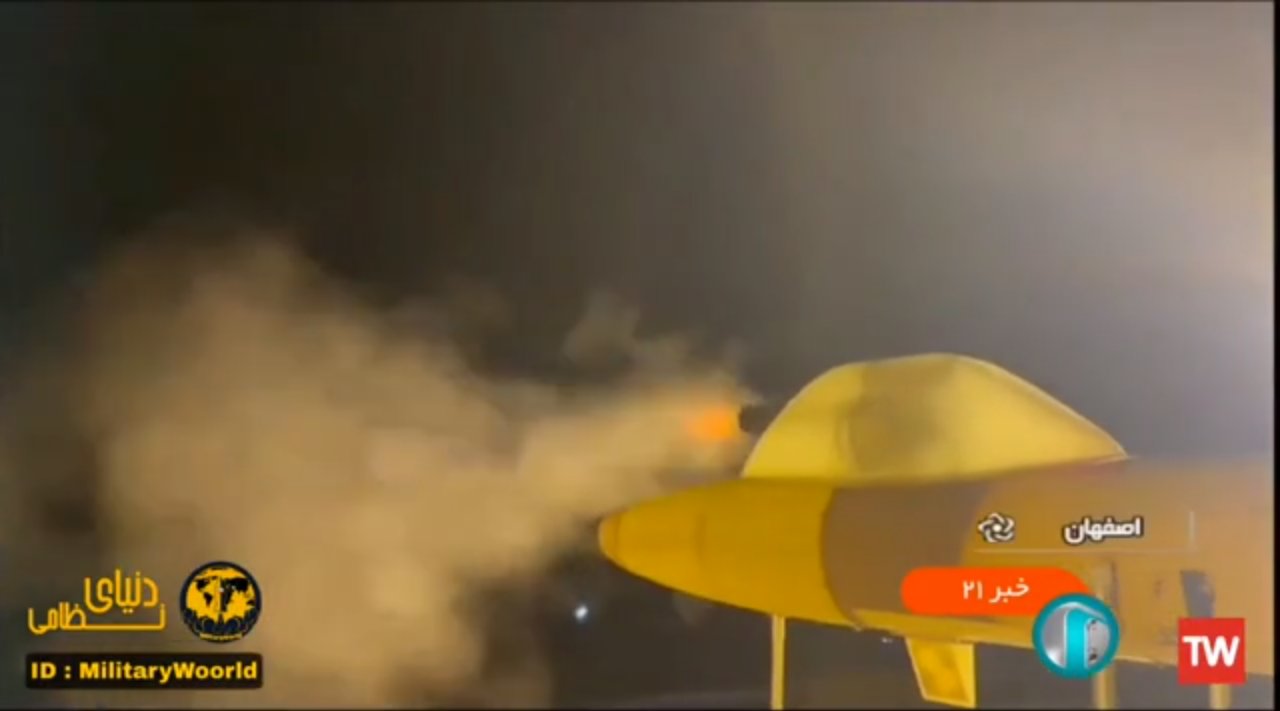
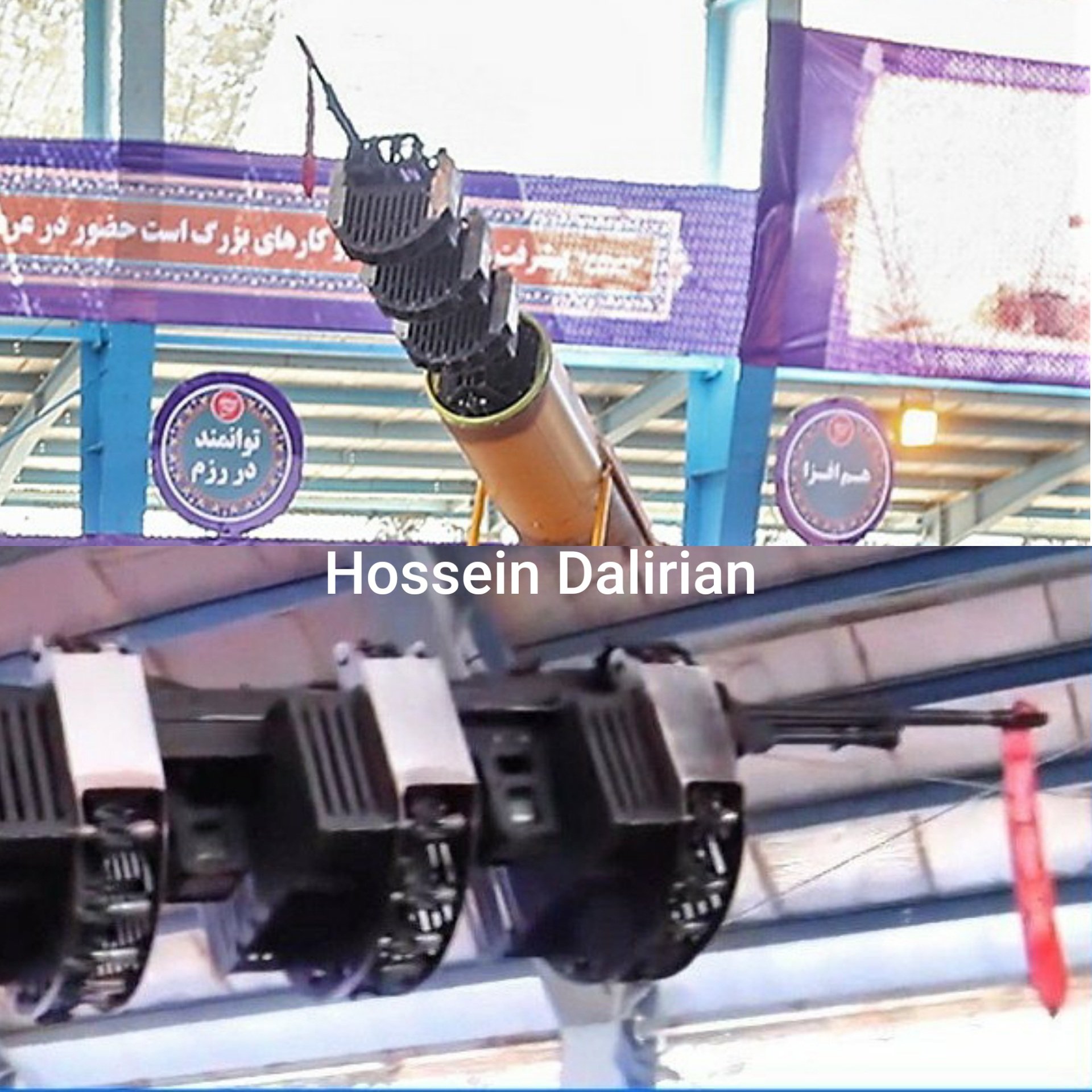
In addition to mentioned weapons, an air-launched torpedo has also been installed on the Karrar drone. The Mark 46 torpedo installed on the Karrar is a light air-launched torpedo with a weight of 230 kg, which can destroy all types of submarine targets with a 43.9 kg warhead and a range of 11 km.
Due to the use of wide range of weapons that Karrar can carry, it is capable of conducting a various range of missions; Therefore, the Karrar drone can be considered and named as the first multirole drone in the world!

Karrar drone missions:
Air-to-ground (bombing)
Air-to-air (interception)
Air-to-surface (anti-ship)
Anti-submarine
Target drone
Suicide drone
Karrar drone specifications:
Role: multirole drone
Length: 3.75 meters
Wingspan: 3.1 meters
Height: 1.5 meters
Maximum take-off weight: 750 kg
Weight: 500 kg
Weapons payload: up to 250 kg
Weight of warhead in the suicide version: 226 kg of TNT
Engine: Toloue-4 or Toloue-5 turbojet
Cruise speed: 700 km/h
Maximum speed: 900 km/h
Maximum range: 1000 km
Combat range: up to 500 km
Flight ceiling: 10700 to 13100 meters
Origin: Iran

More images of Karrar drone:
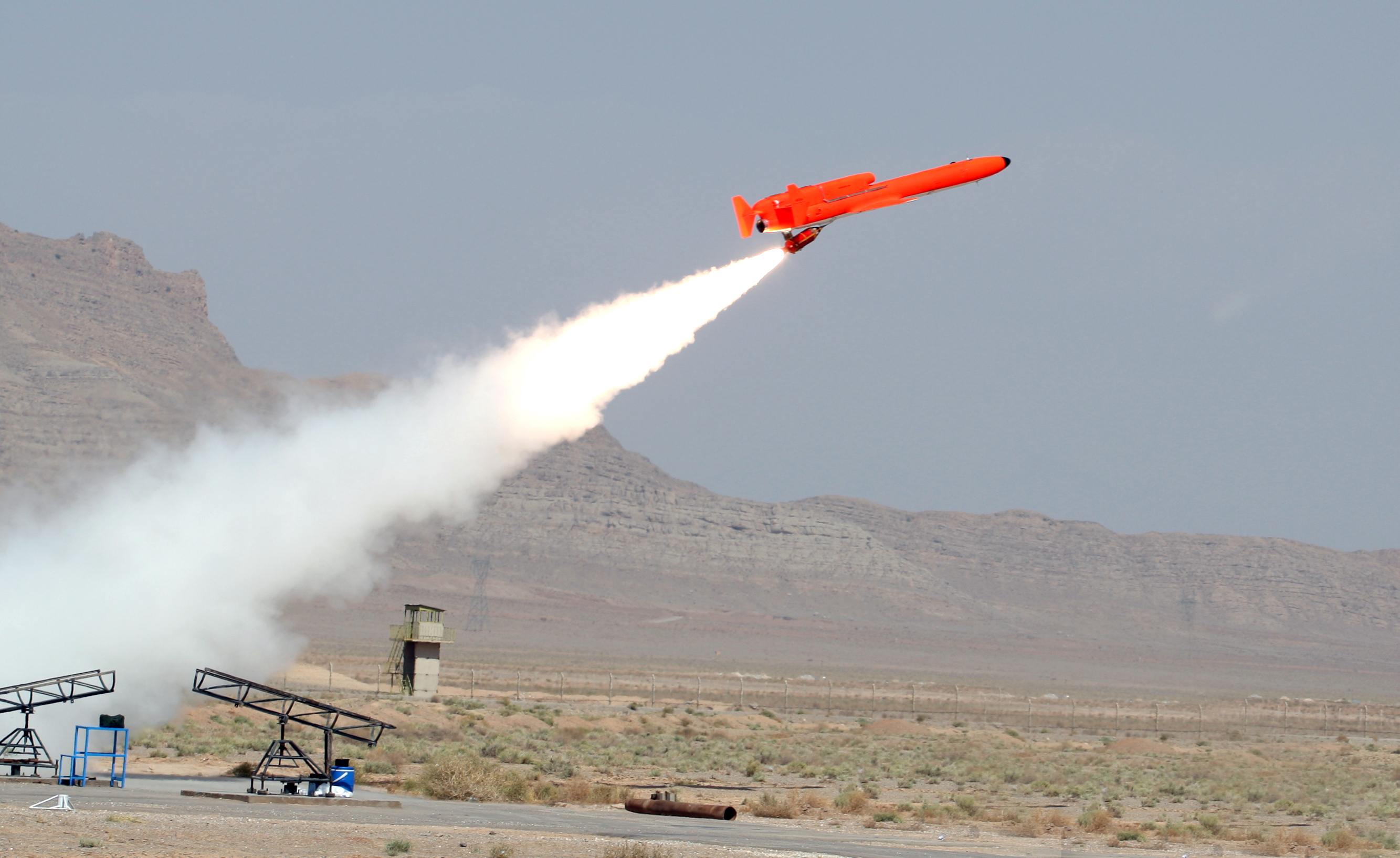
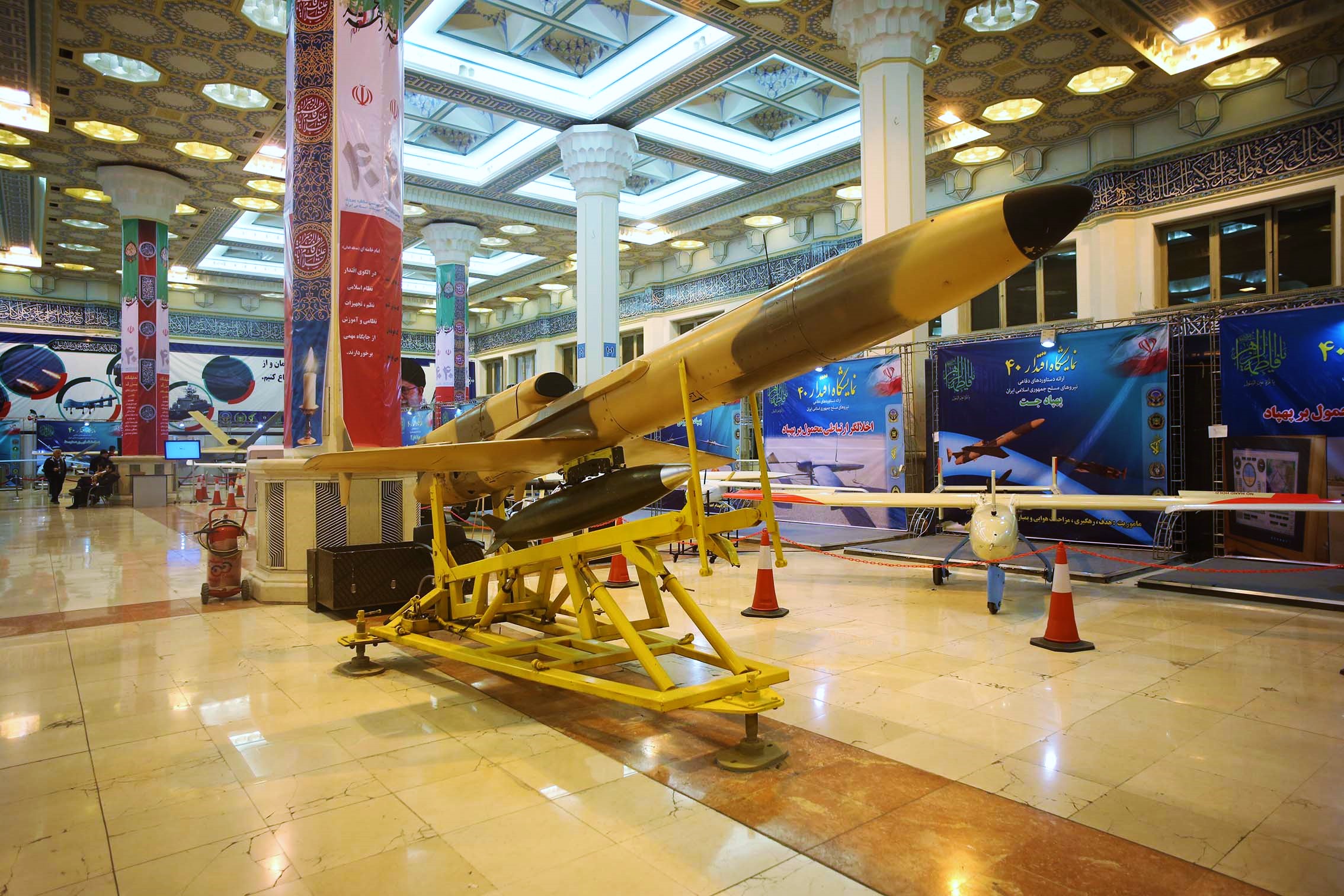
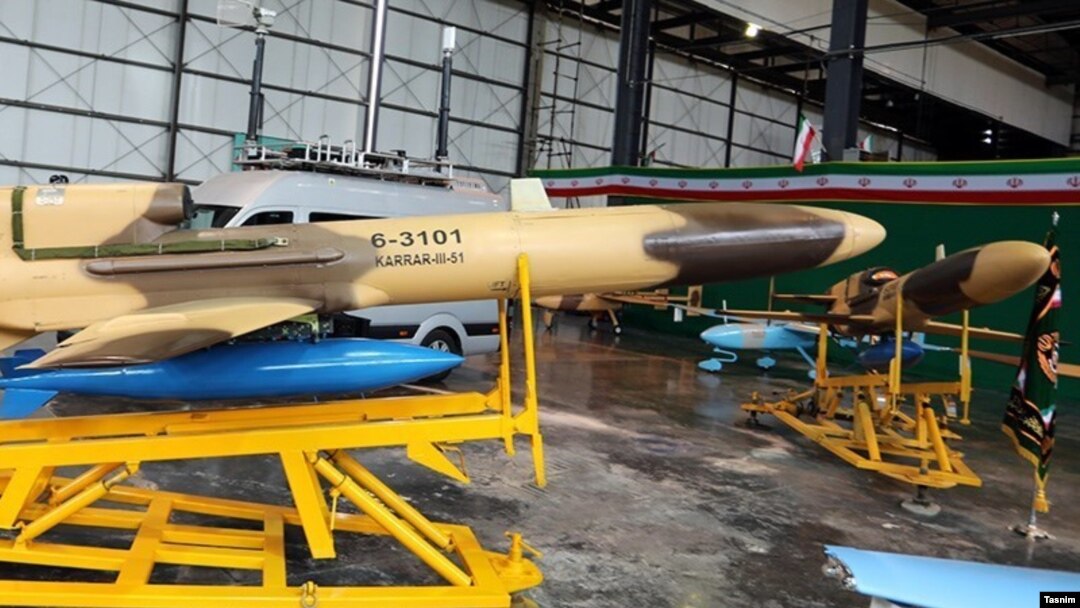

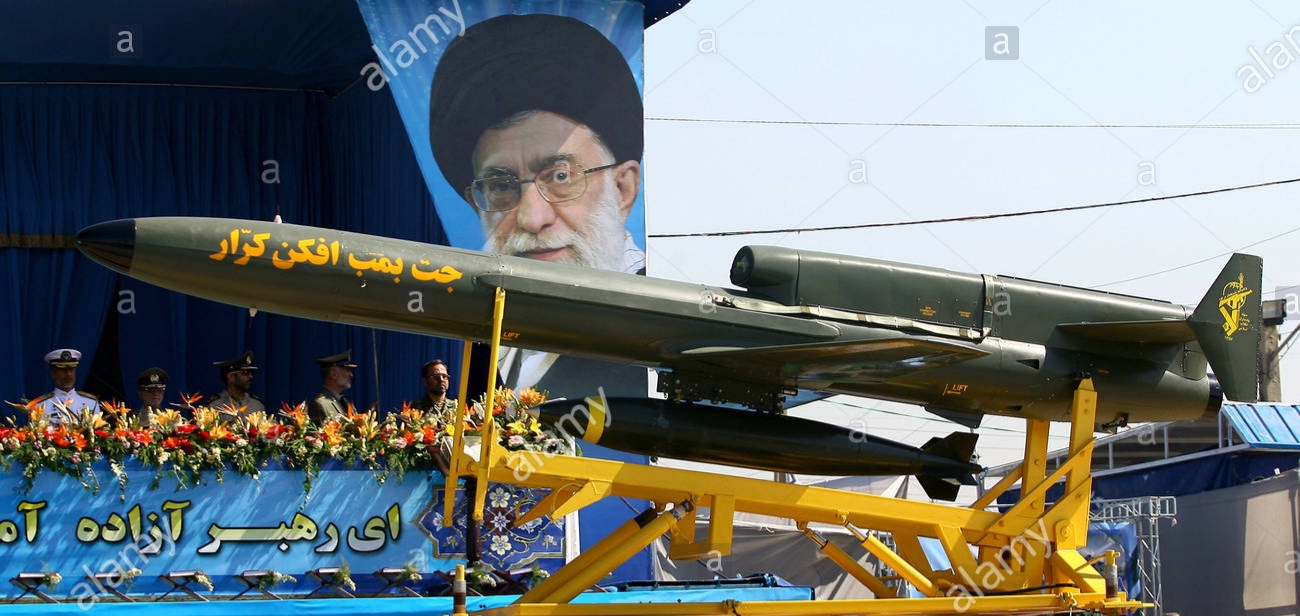

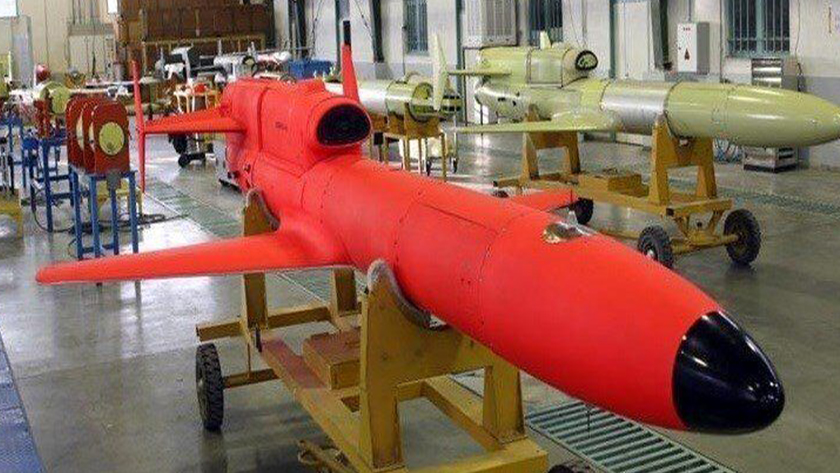
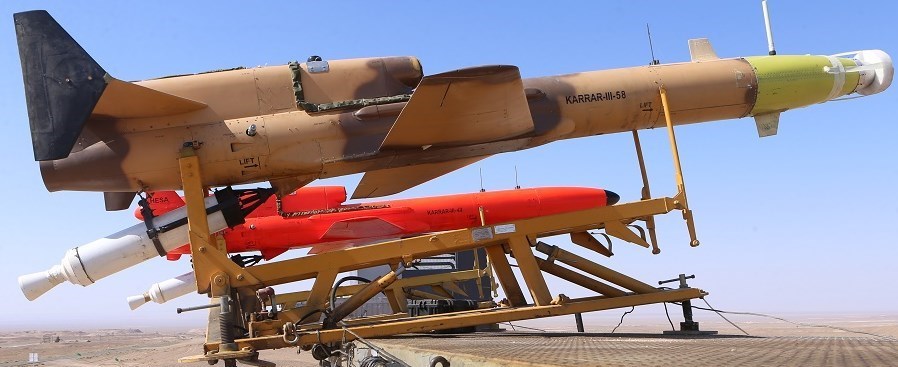
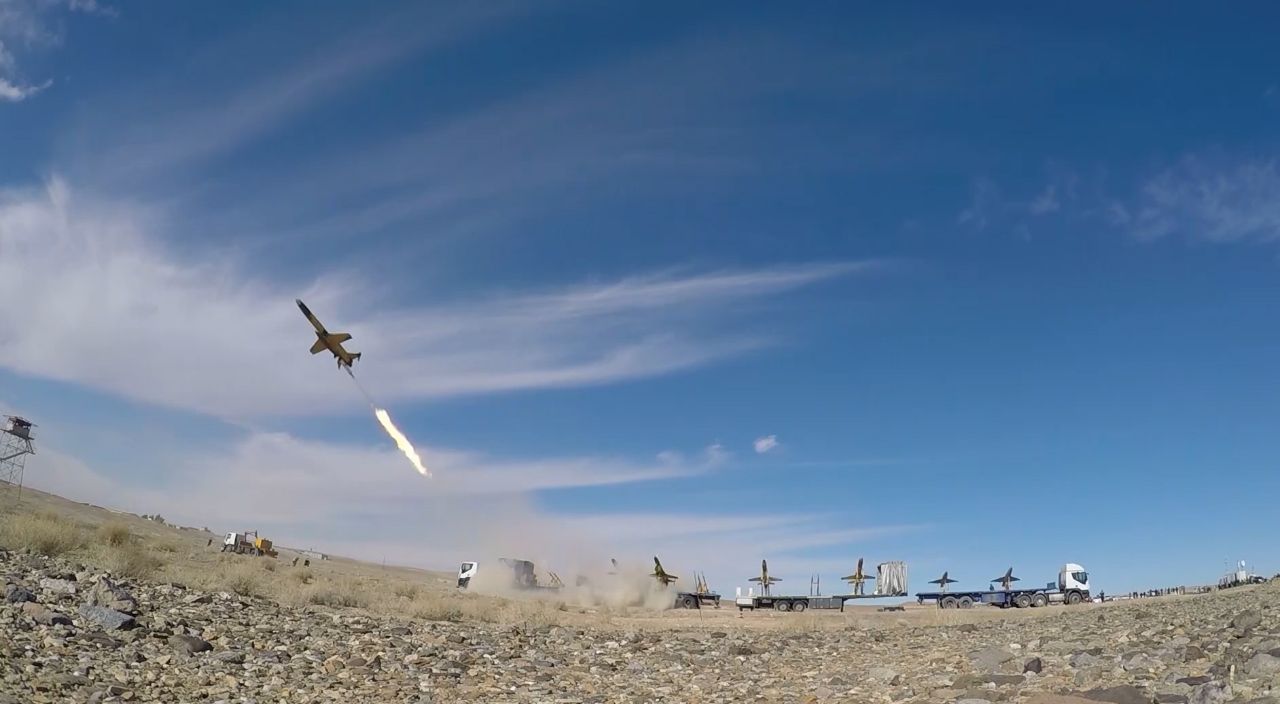
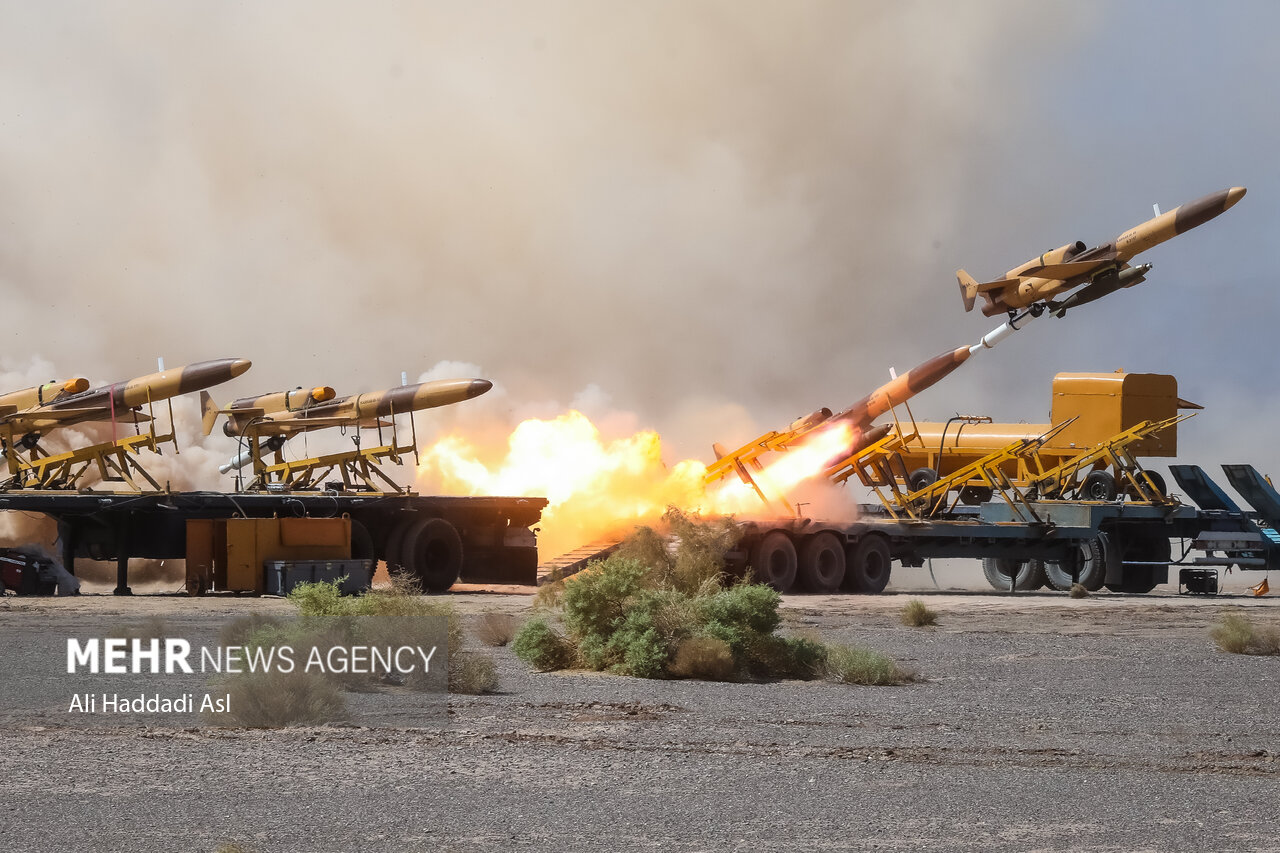
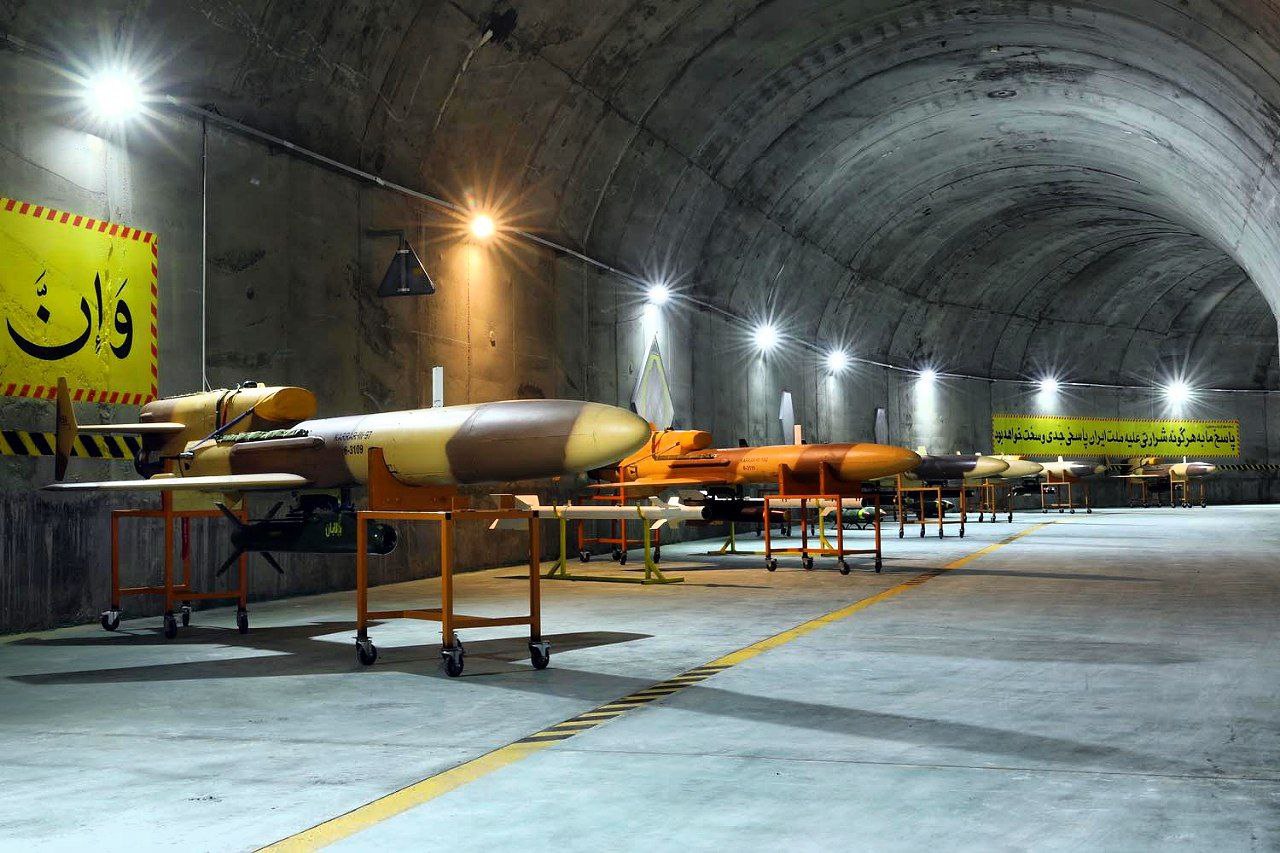
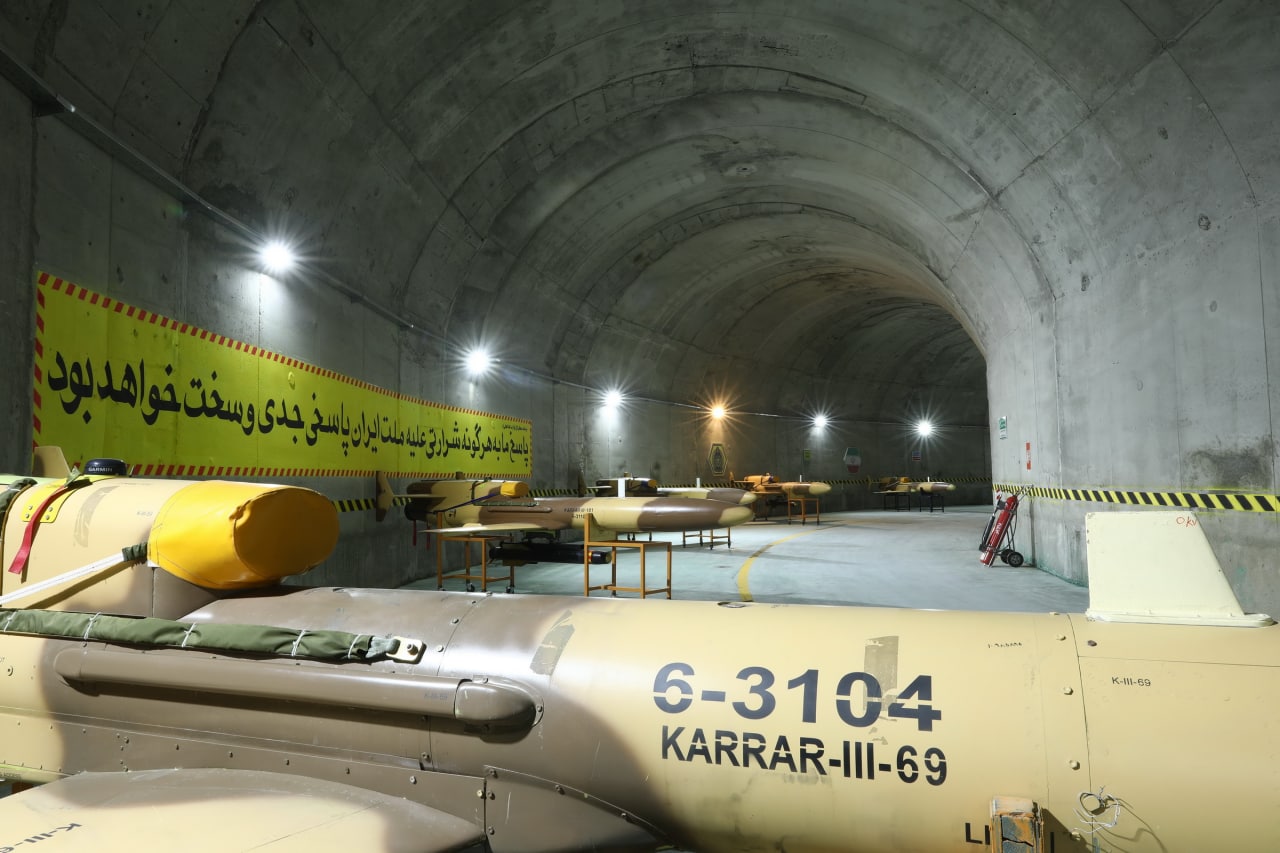
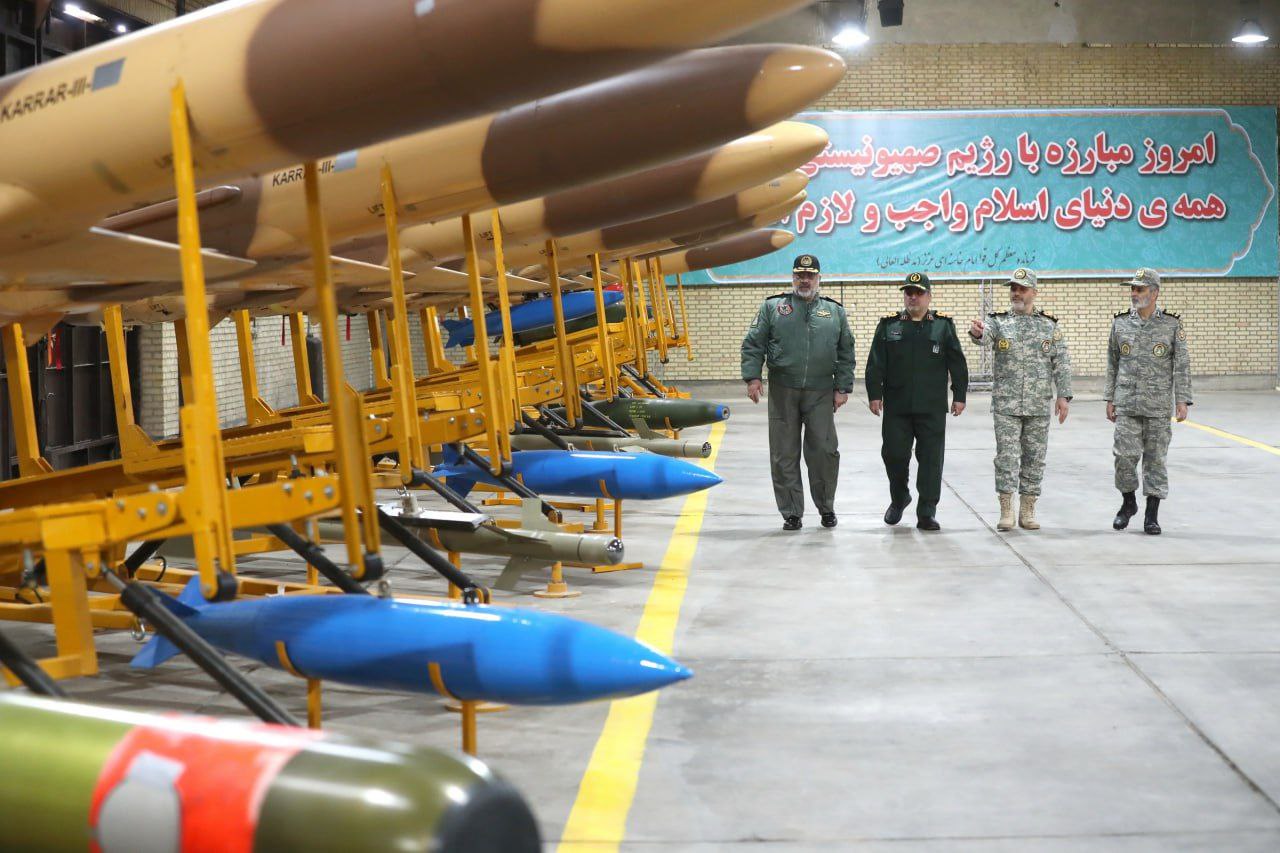
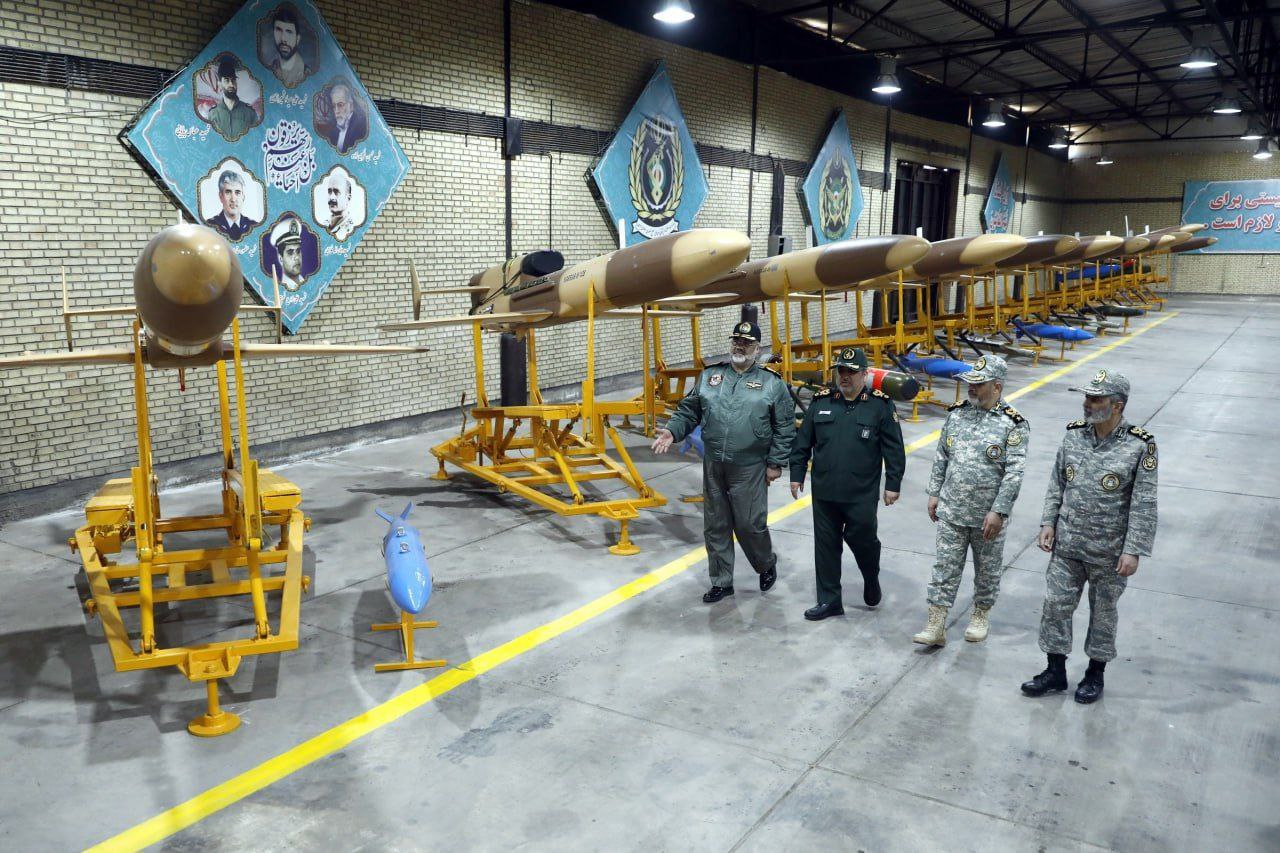
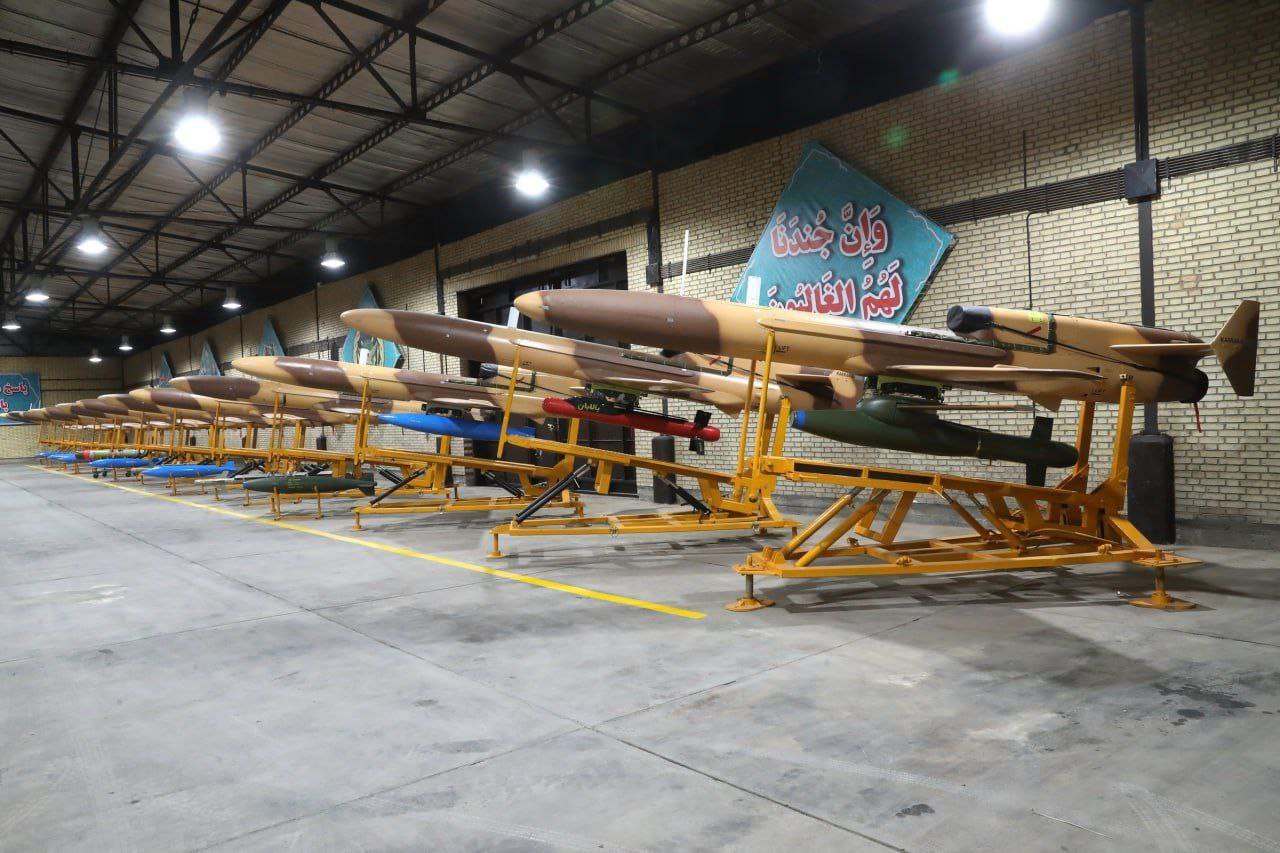

The collection of Karrar UAV posters in Russian, Hebrew, Arabic, Azeri, Kurdish Farsi:
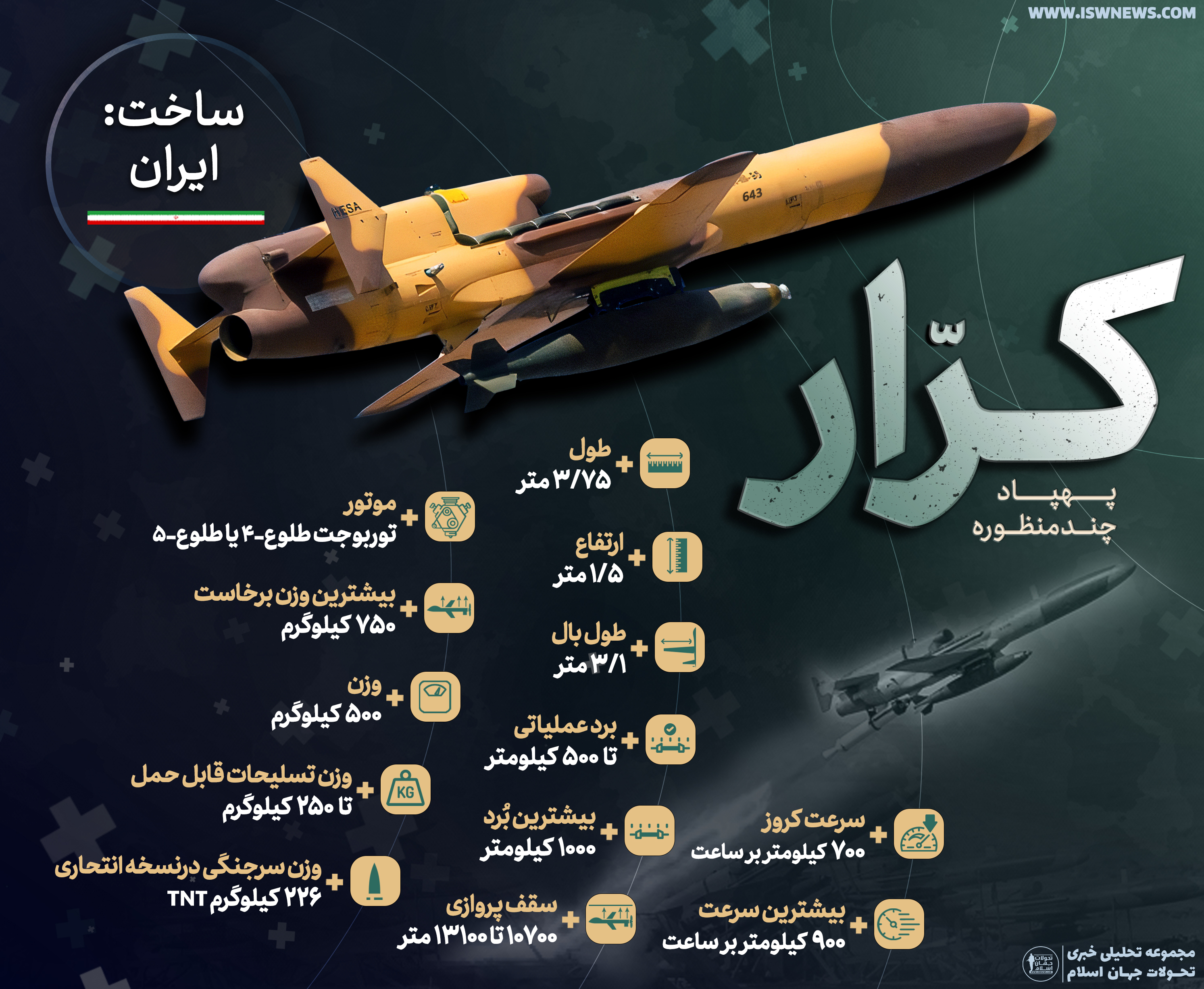

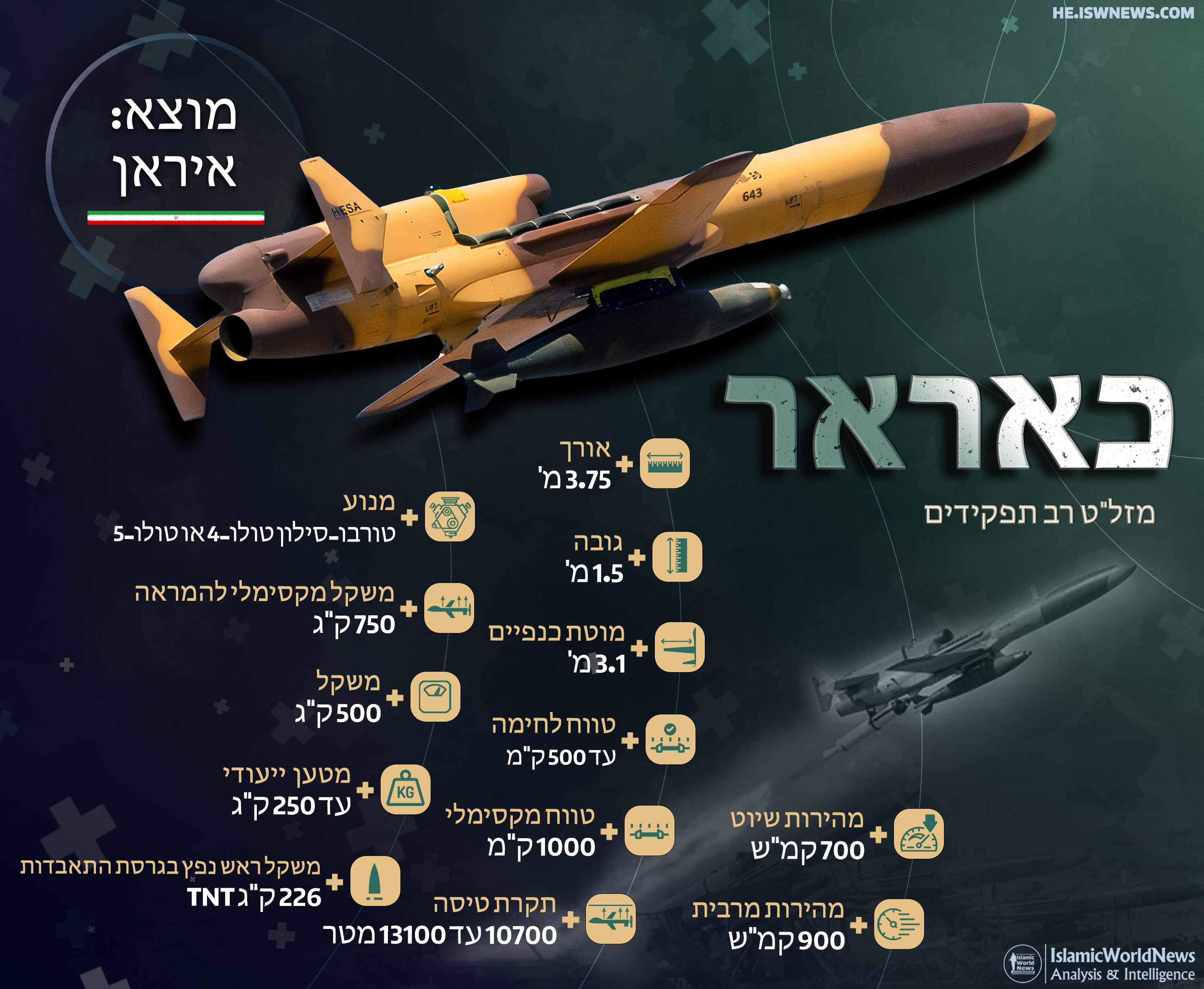
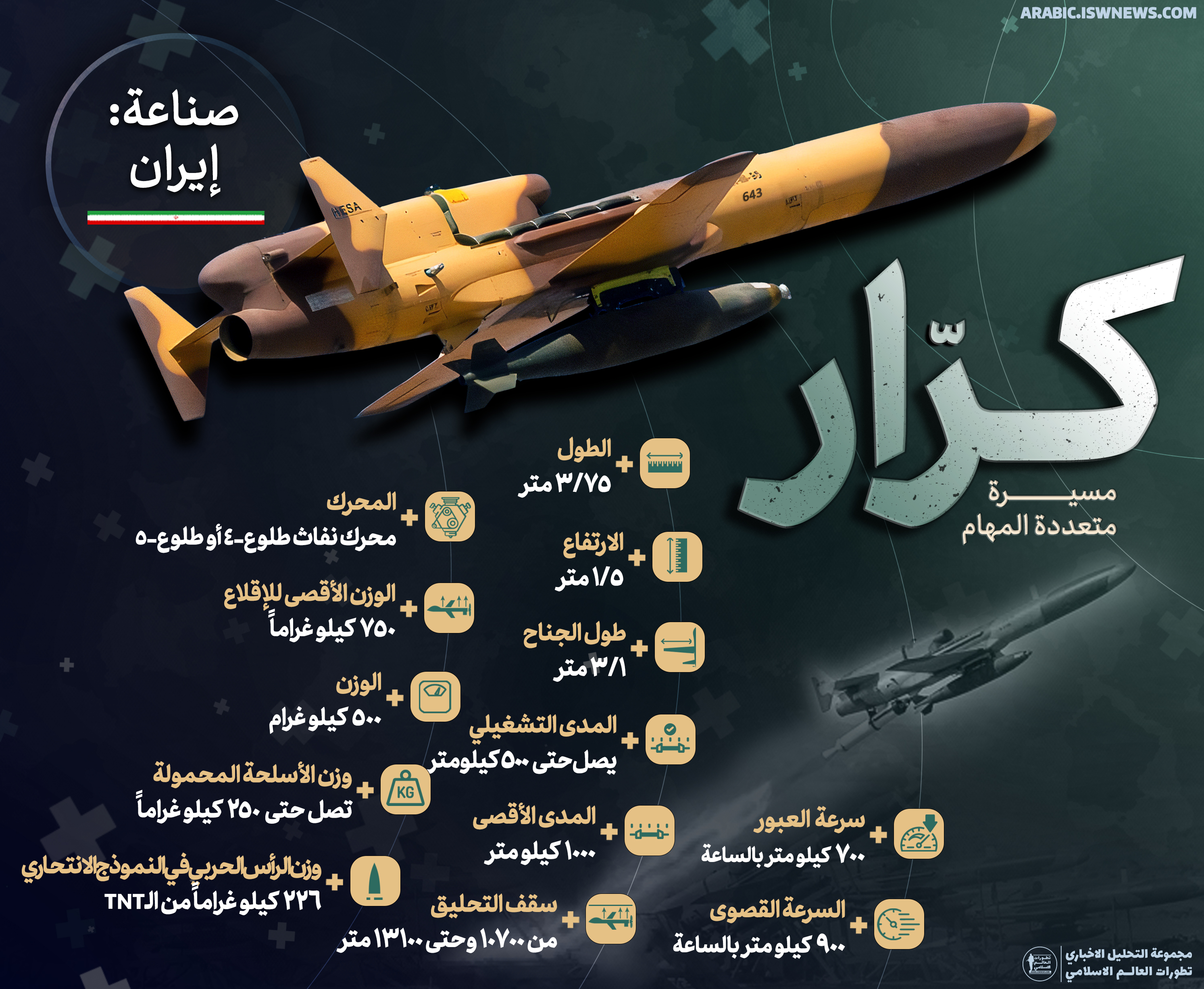
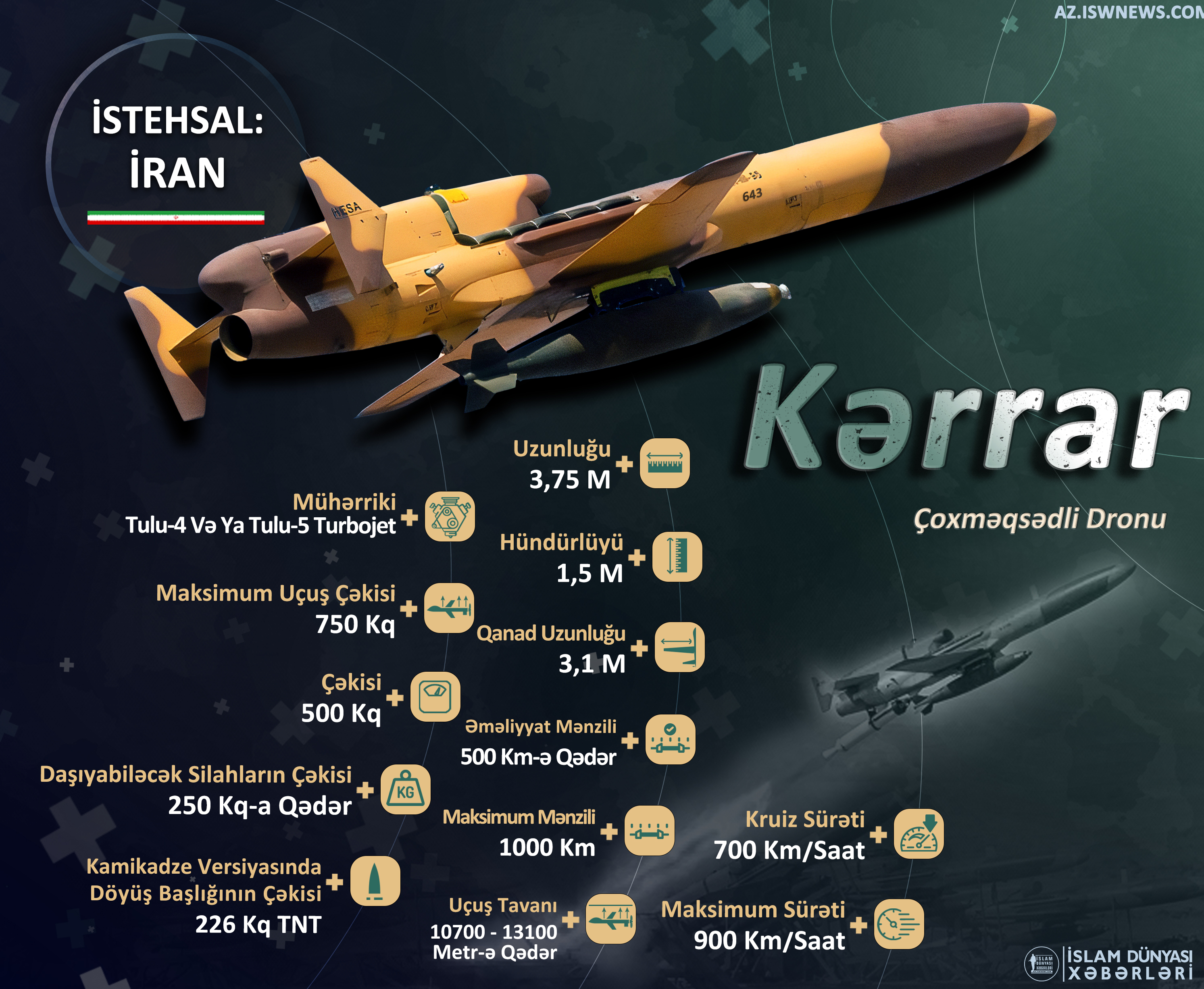

Source:
TRI60-2/074
کرار (پهپاد)
Constantly computed impact point

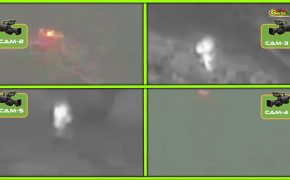

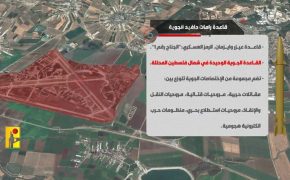
Comment